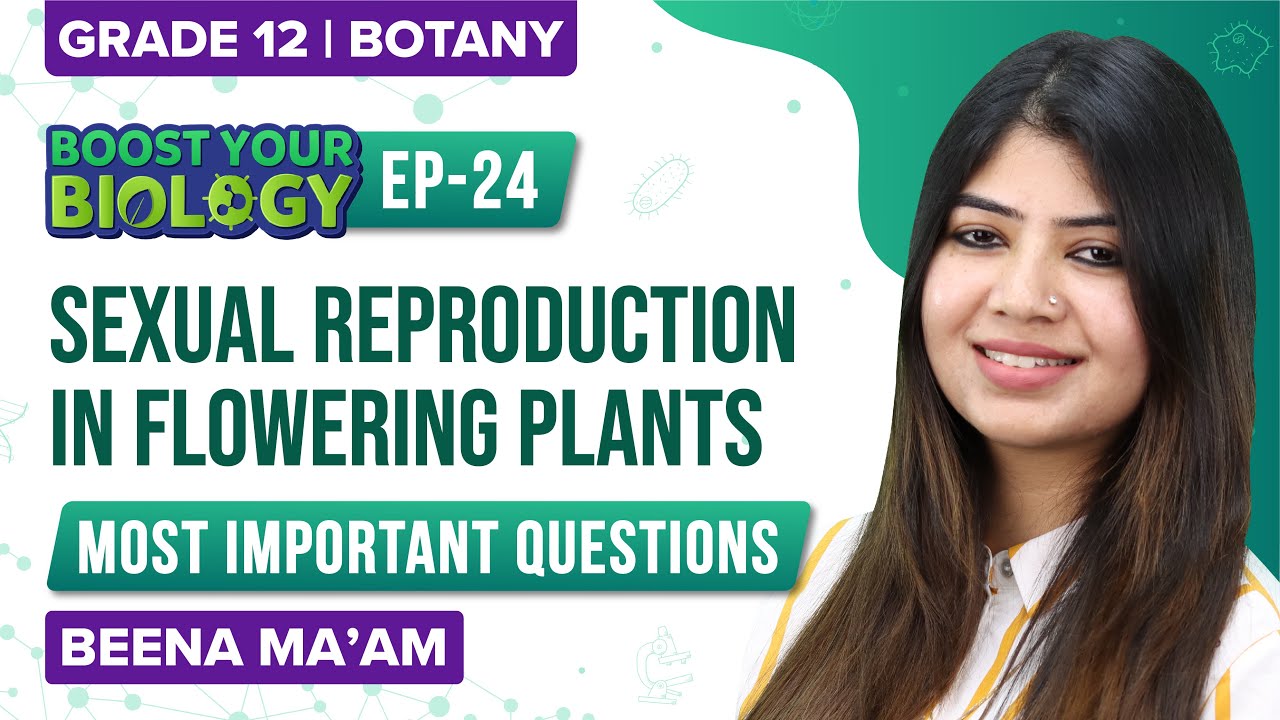Flowering plants or angiosperms reproduce sexually by the process known as pollination. In this process, the pollen from the male anther is transferred to the female stigma. These pollens travel through the pollen tube and produce gametes which fuse with the egg in the embryo sac. This gives rise to fruit.

A few MCQs on Reproduction in Flowering Plants are mentioned below for practice. The answers are also provided for your reference.
MCQs on Reproduction in Flowering Plants
1. Flowers with both androecium and gynoecium are called
1. Bisexual flowers
2. Anther
3. Stamens
4. Unisexual flowers
Also read: Flower
2. The transfer of pollen from the anther to stigma is called
- Pollination
- Fertilization
- Adoption
- Diffusion
Also read: Pollination
3. The fusion of female reproductive nucleus with the male reproductive nucleus is known as
- Adoption
- Excretion
- Fertilization
- Regeneration
4. The two nuclei at the end of the pollen tube are called
- Tube nucleus and a generative nucleus
- Sperm and ovum
- Generative nucleus and stigma
- Tube nucleus and sperm
5. Generative nucleus divides forming
- 2 male nuclei
- 3 male nuclei
- 2 female nuclei
- 3 female nuclei
6. Embryo sac is located inside the
- Stigma
- Ovule
- Micropyle
- Style
Also read: How is an Embryo-sac formed?
7. One nucleus of the pollen tube and secondary nucleus of the ovum grow into
- Stigma
- Endosperm
- Anther
- Stamen
8. The stalk of Datura flower at its base is known as
- Pedicel
- Corolla
- Sepals
- Thalamus
9. The male reproductive parts of a flower, the stamens, are collectively known as
- Androecium
- Filament
- Anther
- Gynoecium
10. The other name for gynoecium is
- Pistil
- Stigma
- Androecium
- Style
Also read: Pollen-pistil interaction
11. Functional megaspore in a flowering plant develops into
- Endosperm
- Ovule
- Embryo-sac
- Embryo
Also read: Angiosperms
12. Which of the following is similar to autogamy, but requires pollinators?
- Geitonogamy
- Cleistogamy
- Apogamy
- Xenogamy
13. What is the function of the filiform apparatus?
- Guide the entry of pollen tube
- Recognize the suitable pollen at the stigma
- Produce nectar
- Stimulate division of the generative cell
14. A mass of nutritive material outside the embryo sac is called _____
- Protoplasm
- Pericarp
- Ectoderm
- Perisperm
15. Which of the following statements is correct?
- Sporogenous tissue is haploid
- The hard outer layer of pollen is called intine
- Tapetum nourishes the developing pollen
- Microspores are produced by endothecium
16. Which of the following fruit is produced by parthenocarpy?
- Brinjal
- Apple
- Banana
- Jackfruit
Also read: Parthenocarpy
17. The process of formation of seeds without fertilization in flowering plants is known as
- Budding
- Apomixis
- Sporulation
- Somatic hybridization
Also read: Apomixis
18. Functional megaspore in an angiosperm develops into
- Endosperm
- Embryo
- Embryo-sac
- Ovule
Also read: Microsporangia
19. Rewards and attractants are required for
- Entomophily
- Cleistogamy
- Anemophily
- Hydrophily
20. A dioecious flowering plant prevents
- Geitonogamy and xenogamy
- Autogamy and xenogamy
- Autogamy and geitonogamy
- Cleistogamy and xenogamy
Answer Key
| 1- 1 | 2- 1 | 3- 3 | 4- 1 | 5- 1 |
| 6- 2 | 7- 2 | 8- 1 | 9- 1 | 10- 1 |
| 11- 3 | 12- 1 | 13- 1 | 14- 4 | 15- 3 |
| 16- 3 | 17- 2 | 18- 3 | 19- 1 | 20- 3 |
For more details on Biology MCQs or any Biology related topic, keep visiting BYJU’S website or download BYJU’S app for further reference.
Excellent question paper
ya this is amazing
BYJU’S is nice